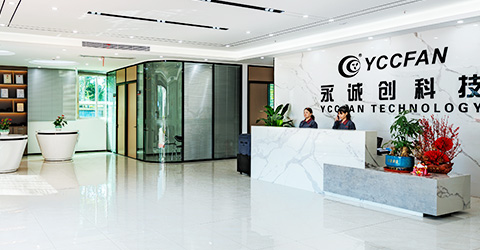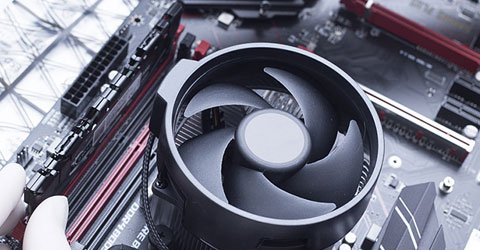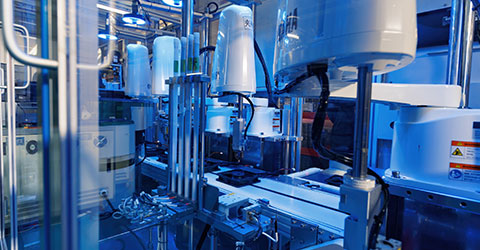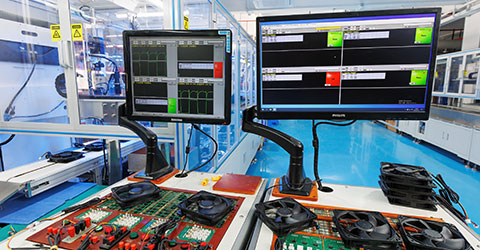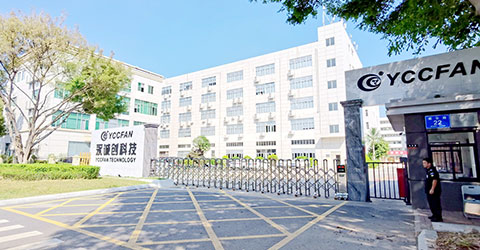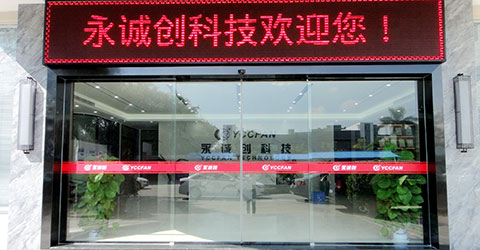How to Pick the Right Industrial Fan Factory?
With hundreds of industrial cooling fan manufacturers offering seemingly similar products, how do you distinguish a competent partner from a short-term vendor? The answer lies in a methodical approach that begins with clearly understanding your needs and ends with evaluating a fan factory’s technical, operational, and service capabilities. This guide is designed to walk you through that process step by step, helping you avoid common pitfalls and make a confident, informed sourcing decision.
Learn more:
Top 5 Industrial Cooling Fan Manufacturers in 2025 (yccfan.com)
1.Understand Your Requirements First
Choosing the right industrial fan factory starts with a deep understanding of your own operational needs. Without clearly defined requirements, it’s easy to end up with an ill-suited product—leading to higher costs, inefficiency, or even safety risks. This section outlines three key steps to help you clarify what you truly need.
1.1 Define the Core Function
Begin by identifying the primary role the fan will serve. Is the goal to improve air circulation, remove heat from equipment, or extract fumes and contaminants from a confined area? Each objective calls for different technical solutions.
For example:
Large warehouse ventilation typically favors HVLS fans that move large volumes of air slowly and quietly.
Spot cooling for machinery demands axial fans with focused airflow and higher speeds.
Air extraction systems, especially those involving ducting or filters, are better served by centrifugal fans, which handle higher static pressure effectively.
Being specific about the purpose sets the direction for all subsequent decisions—including fan design, motor power, and material selection.
1.2 Specify Performance and Environmental Conditions
After defining the use case, move on to technical performance requirements. The three most important factors to consider are:
Air Volume (CFM or m³/h): Determines how much air the fan needs to move to maintain comfort or safety standards.
Static Pressure: If the fan must push air through filters, ducts, or louvers, higher pressure capability is essential—particularly for centrifugal types.
Environmental Conditions: Factors like dust, moisture, temperature, or corrosive chemicals significantly impact the choice of materials and coatings. For instance, stainless steel may be necessary in humid or chemical-laden settings, while sealed motors are preferred in dusty environments.
It’s also important to consider operational patterns—will the fan run continuously or intermittently? This directly affects the motor class and long-term reliability.
1.3 Match the Fan Type to Your Needs
Once the application and environment are clear, selecting the right fan type becomes much easier:
Axial Fans: Best for high-volume, low-pressure applications such as general ventilation or equipment cooling.
Centrifugal Fans: Suitable for scenarios with higher airflow resistance, such as fume extraction or air purification systems.
HVLS Fans: Designed for large spaces where air circulation is needed over wide areas with minimal noise or energy use.
Explosion-Proof Fans: Mandatory in hazardous areas with flammable gases or fine dust, these fans adhere to strict safety standards and use spark-proof materials.
Some projects may also require customized or hybrid solutions, especially in specialized environments like tunnels, greenhouses, or chemical facilities. In such cases, communicating your requirements clearly will enable manufacturers to propose tailored configurations.
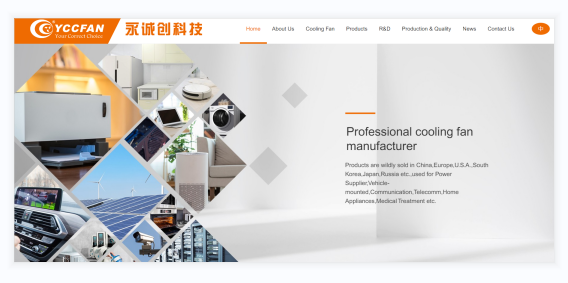
2.Key Factors to Consider When Choosing an Industrial Fan Factory
Learn more:
Once your technical and operational needs are clearly defined, the next step is selecting a industrial cooling fan manufacturer partner capable of meeting them with consistency and professionalism. It’s not enough to compare prices or catalogs—what truly matters is whether the factory has the capability, experience, and commitment to deliver high-performing solutions. The following criteria can help you make a well-informed decision.
2.1 Manufacturing Capabilities
A reliable factory should demonstrate strong internal control over the production process. In-house manufacturing enables better quality management, flexibility for design changes, and faster lead times. Factories that rely heavily on outsourcing often face inconsistencies in product quality.
Key signs of robust manufacturing capabilities include the use of precision equipment such as CNC machines and dynamic balancing systems, which are essential for producing well-calibrated rotors and minimizing vibration. Additionally, vertically integrated factories that produce components like impellers and motor housings in-house can better ensure consistency and performance.
Another indicator is their ability to offer OEM or ODM customization, whether for branding, unique dimensions, or special compliance requirements. A site audit, whether physical or virtual, can offer first-hand insight into their infrastructure and production discipline.
Learn more:
Capability | What to Look For |
Equipment | CNC machines, dynamic balancing systems |
Integration | In-house fabrication of key parts |
Customization | OEM/ODM design flexibility |
2.2 Product Quality and Certifications
Quality assurance reflects the industrial cooling fan manufacturer’s overall commitment to excellence. International certifications such as ISO 9001 (quality management), CE (Europe), UL (North America), CCC (China), or ATEX (for explosion-proof fans) ensure the product adheres to safety and performance benchmarks relevant to your region.
Equally important is transparency in components. Reputable factories openly share the brands of motors and bearings they use—common premium brands include NSK, SKF, and Siemens. Surface coating materials and their resistance to corrosion or chemical exposure are also worth confirming.
Requesting product test reports or case studies—ideally with metrics on airflow, noise levels, and energy efficiency—can help validate the factory’s engineering claims and give you confidence in the fan’s long-term reliability.
2.3 Engineering and R&D Strength
A capable fan factory should do more than assemble standard models. Their engineering and R&D capabilities are key to adapting products to your specific use cases. This includes being able to simulate airflow and pressure dynamics through CFD (computational fluid dynamics), which is especially valuable for large-scale or complex ventilation systems.
Look for a team that can provide CAD drawings for easy integration into your plant design. More importantly, assess their experience with niche or demanding environments such as corrosive exhaust in chemical plants, large-volume air handling in agriculture, or temperature control in data centers. Factories with deep technical expertise can often offer better-performing, energy-efficient alternatives tailored to your setup.
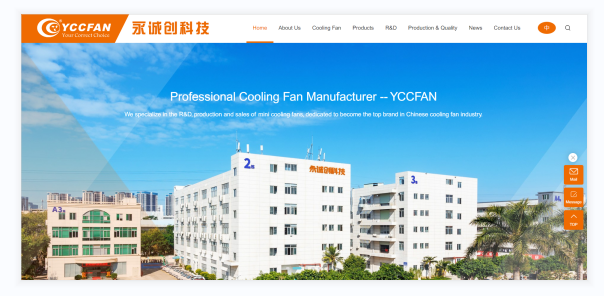
2.4 Production Capacity and Lead Time
Even the most advanced fan is of little use if production is too slow to meet your schedule. Evaluate the factory’s monthly or annual output by model type, and ask about typical lead times for both sampling and bulk orders.
It’s also important to determine whether they can scale production up or down based on your order volume. A factory that can efficiently manage both small, custom orders and high-volume batches without sacrificing quality is a major asset. Look for modular production lines, warehouse inventory systems, and automation features that shorten production cycles.
Evaluation Metric | Why It Matters |
Sample Lead Time | Affects project initiation and approval cycles |
Monthly Capacity | Ensures supply continuity for bulk orders |
Production Flexibility | Supports changing demand levels |
2.5 After-Sales Support and Warranty
Post-sales service is a critical but often overlooked aspect. Effective after-sales support indicates that the manufacturer stands by their product beyond delivery. Ensure they provide responsive technical assistance—ideally with remote diagnostics or even on-site support for complex setups.
Availability of spare parts is another crucial factor. Ask if the factory maintains stock of core components such as motors, blades, and controllers, especially for older or custom models. Warranty terms should be clearly stated, covering both the scope and timeline of protection. Factories that assign a dedicated service contact often provide more streamlined support and faster problem resolution.
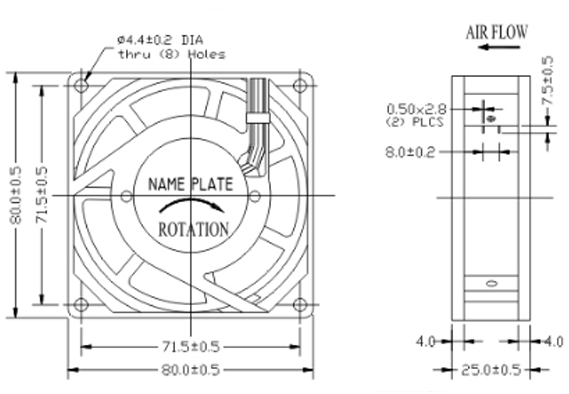
2.6 Market Reputation and Client References
Reputation is built over time through consistent delivery, reliable communication, and responsive support. Ask for references from industries or projects similar to yours to gauge how the factory performs under real-world conditions. A good fan company should have case studies or client testimonials readily available.
Export experience also matters, especially if you’re sourcing from overseas. Factories familiar with international compliance standards, documentation, and logistics can help avoid costly delays or product mismatches. Trade show participation, industry certifications, and third-party audits are additional signals of a factory’s credibility.
If possible, request to speak directly with existing clients. Their feedback can offer practical insights that marketing materials often omit.
Learn more:
Conclusion
The best industrial cooling fan manufacturers don’t just supply equipment,they deliver expertise, customization, and long-term value. By investing the time to assess these factors up front, you’re not just buying a fan—you’re building a foundation for operational reliability and scalable growth. Use this guide as your due diligence roadmap, and you’ll be far better positioned to find a factory that delivers both performance and peace of mind.


